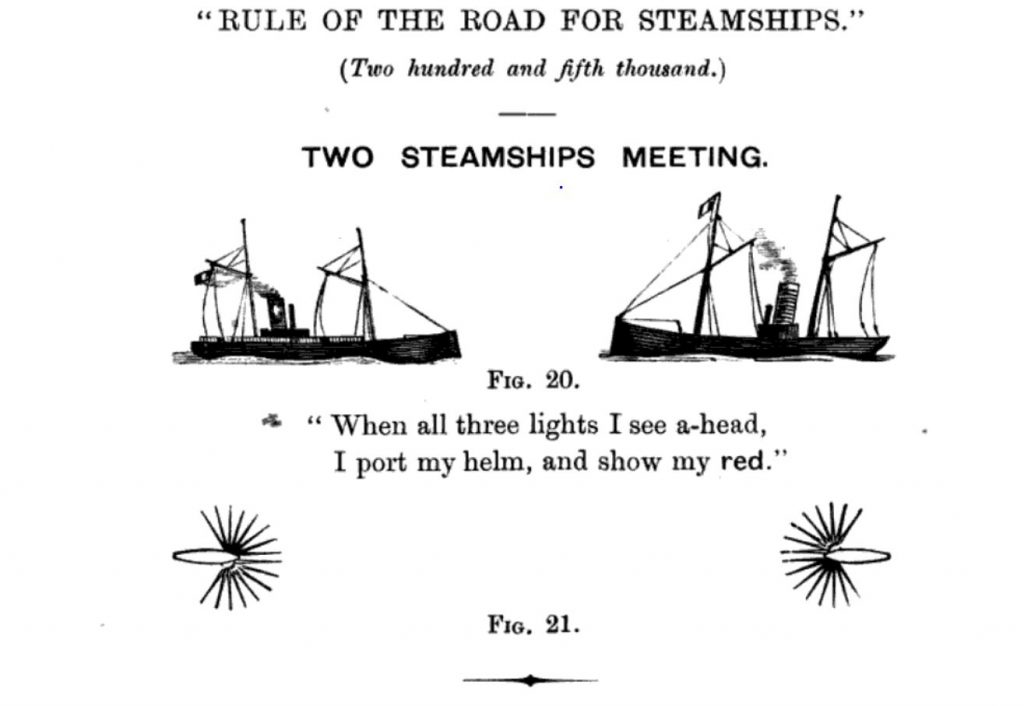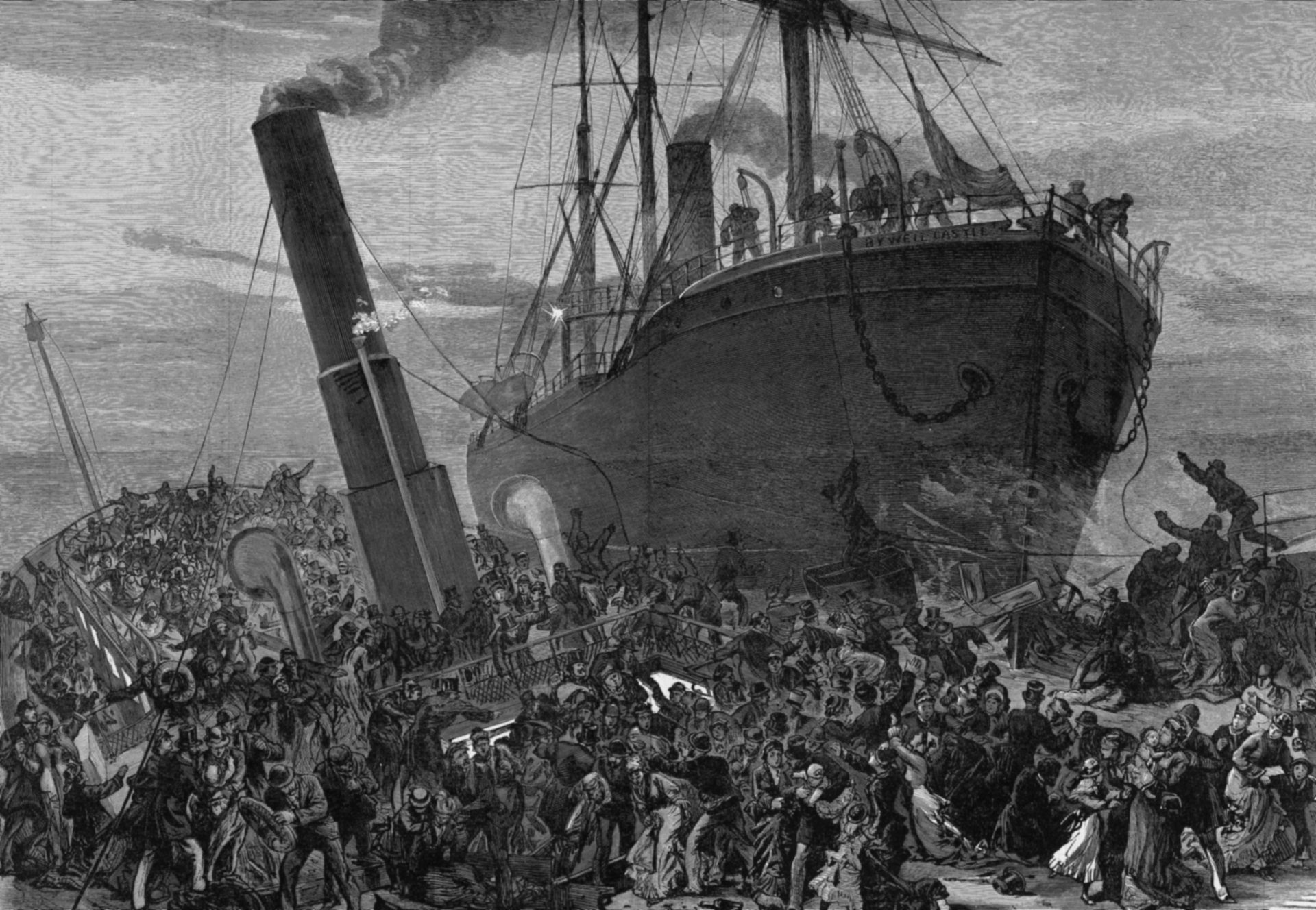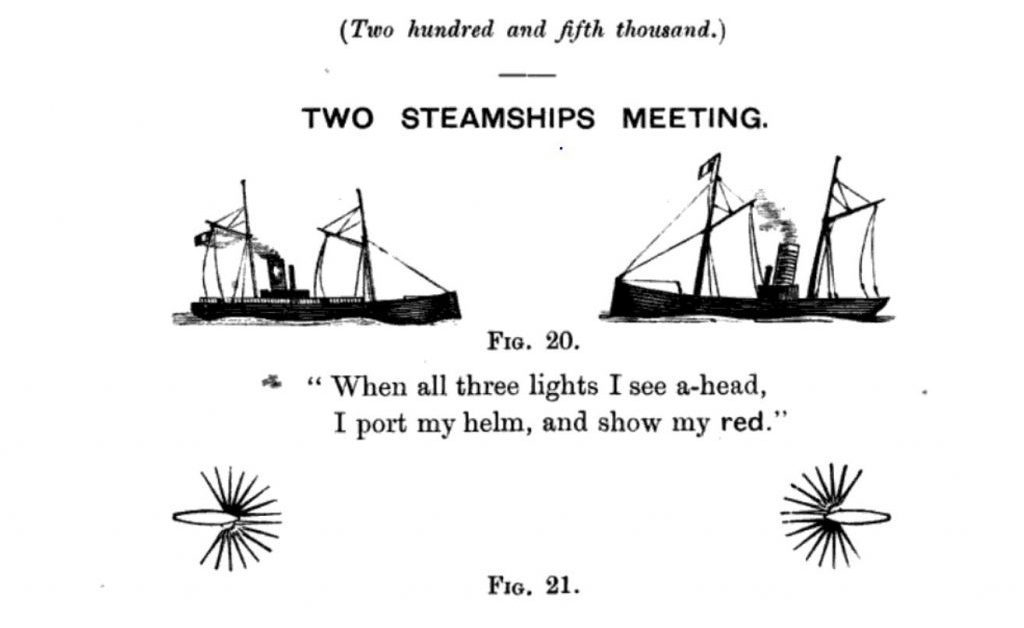Great Britain has led the World in many things, mostly good: maritime safety is but one example. Before the mid nineteenth century, local rules and customs were different and there was no international agreement for navigation procedures and certainly not for navigational marks. For example, it was sometimes the custom for Royal Navy vessels to ‘give way’ or ‘stand on’ according to seniority. Also, until the 1850s there were no navigation lights required although they were used to signal intent at night.

Until that era vessels had been propelled by oars or wind and they usually managed not to hit each other too often. There does seem to have been a general understanding that the vessel on port should give way. However, the advent of steam power in Great Britain in the late eighteenth century (OK, the French had minor involvement) changed the tactical situation. Steamships could make their way in any direction and manoeuvre quickly. This new situation resulted in many collisions and deaths (some examples here).
Something had to be done and it was, quite reasonably, the Admiralty and Trinity House that proposed a set of rules in 1840 which, over time, developed into the IRCPS that we have today 1More history on COLREGS here .
Unfortunately, it took time for all ships to learn and apply these, The Princess Alice disaster happened on the River Thames in 1878 when the Bywell Castle and Princess Alice both turned to starboard in Galleons Reach at night. Around six hundred and fifty souls were lost, perishing in London’s sewage that had just been released at the point of Low Water.

English: Drawing of a collision between the Princess Alice and Bywell Castle. Caption reads “The great disaster on the Thames—Collision between the Princess Alice and the Bywell Castle, near Woolwich.
Date 12 October 1878
Source
Orig: “The Disaster on the Thames”, Illustrated London News 14 September 1878; pp. 258-259
This version: Harper’s Weekly October 12, 1878, Volume Vol XXII No 1137, pages 812 and 813
Author
Unknown author. The original printed source has no information relating to the illustrator, and extensive internet searches have found no further information
Thomas Gray (this one did poems I can relate to) popularised these in his ‘Rules of the Road’ a book I’d like to find a real copy of sometime. The rhymes are worth learning even today. The link is to an online fourth edition and has some interesting differences with today’s practice as well as lovely adverts2Rules of the Road .
Green to Green or Red to Red,
Perfect safety Go ahead!If to Starboard Red appear,
It is my duty to keep clear;Act as judgement says is proper,
Port or Starboard Back or Stop her!But when upon my port is seen
A Steamer’s Starboard light of Green,For me there’s nought to do, but see
That Green to Port keeps clear of me.Both in safety and in doubt
I always keep a good look-out;If in danger, with no room to turn,
Thomas Gray
I ease her! Stop her! Go astern!
Here is an excellent account of the development of the colregs:
Twenty-Five Hundred Years Of The Rules Of The Road By Lieutenant Edward F. Oliver, U. S. Coast Guard
and another
The development of regulations for preventing collisions in inland, inshore, and open waters of the UK during the first half of the nineteenth century (st-andrews.ac.uk) a thorough history of the development of colregs.
and
Notes and References
- 1
- 2
